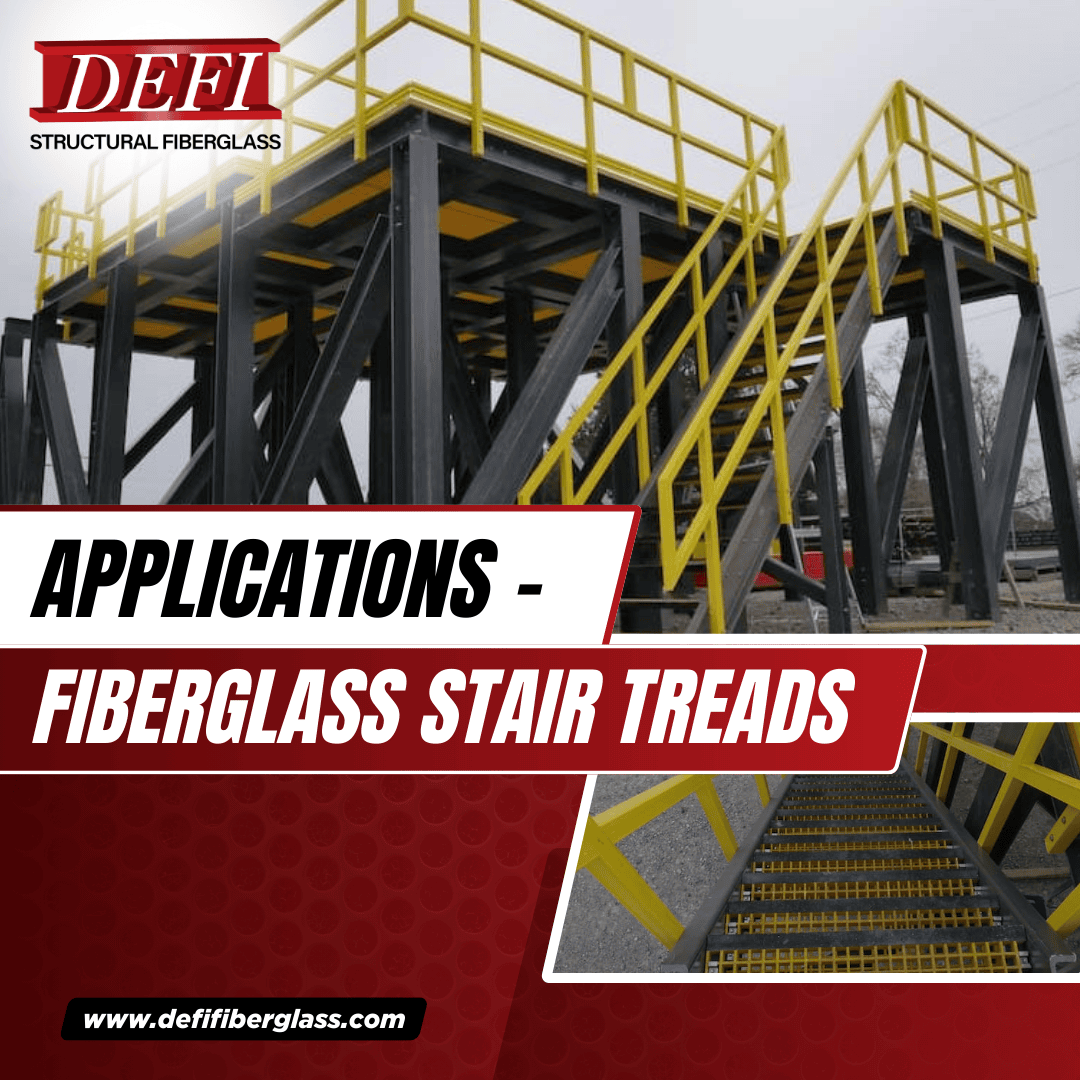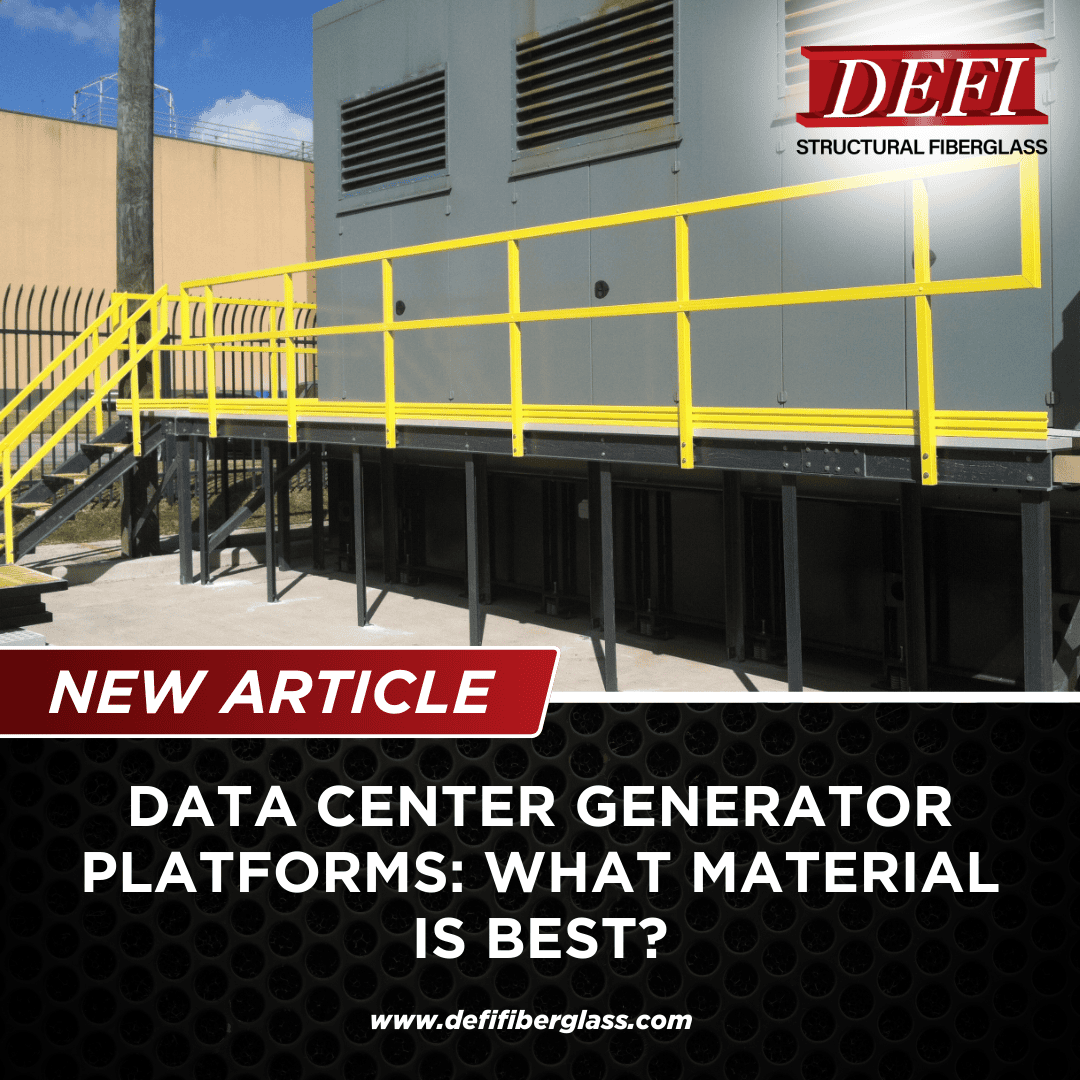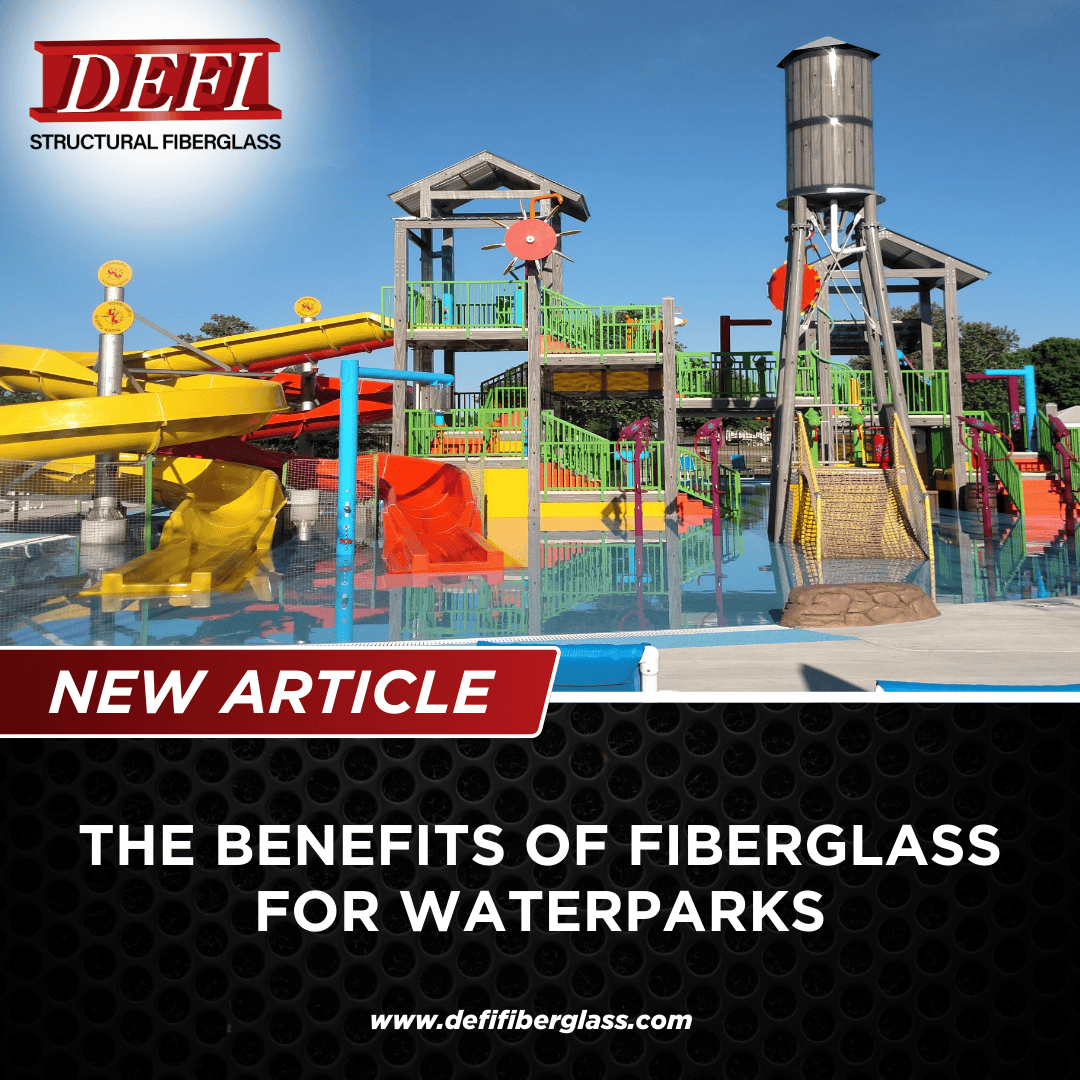A: Structural FRP is commonly referred to as H-beams, wide flange beams, and can even be square tube. Commonly, those applications are for walkways and catwalks and it can even be for ladders with cages.
While FRP panels and grating are fairly commonplace in the realm of building materials, FRP is also used for structural applications beyond surfaces. When we say this we mean the actual framing of structures such as buildings, walkways, ladder and cage systems, and other structural designs.
As Arthur mentioned, structural FRP refers to core shapes and profiles that are used to create a structure. Mainstream industries are just beginning to see the huge benefits of building with structural FRP in recent years. However, the military and aerospace industry has long used structural FRP. This is mainly due to its extreme strength that’s equal to steel at a fraction of the weight.
Additionally, with military and aerospace applications using so much equipment that is sensitive to EMF interference, FRP is a perfect fit. Since it is non-conductive, it does not emit any type of interference like steel does.
The Growth Of Structural FRP In The Mainstream
The explosion of fiber-reinforced polymer (FRP) composite usage for infrastructure applications is due to the traits of FRP itself. These durable composite materials make such fiscal and structural sense that new shapes and profiles are being requested all the time. In addition, it’s spurring innovation in manufacturing techniques, building design, and construction methods.
Developers and engineers are finding new ways to implement structural FRP into their designs to control cost and increase the durability of projects. Given the low maintenance of FRP components and structural designs, engineers can reduce the infrastructure investment for projects significantly.
In plain English, FRP is a more efficient and cost-effective way to overcome design challenges. It reduces construction costs and offers a better value due to its long lifespan. To maximize the benefits that structural FRP offers, you need to design with the traits of FRP in mind.
The Benefits Of Structural FRP Components
For a long time, steel has enjoyed its position at the top of the structural building materials industry. It makes sense—steel is strong, it’s rigid, and it has the industrial strength for heavy-duty projects.
However, that being said, steel also has some major drawbacks and hidden costs many businesses forget about:
- Corrosion— Steel is susceptible to corrosion, especially in high moisture environments or where contact with corrosives is commonplace.
- Shock Hazard— In high-voltage workplaces such as electrical plants, steel poses an additional hazard since it is a good conductor of electricity. That’s good for electrical components but dangerous for workers.
- Weight— Steel is very heavy which leads to added costs in freight, installation, and logistics of moving it. Often businesses have to spend thousands reinforcing their foundation to install steel structures, and assembly requires large cranes and other major equipment.
With inflation costs skyrocketing any extra costs as a result of the drawbacks of steel make it a fiscal liability. Now, let’s consider the alternative to steel—structural FRP. What makes this material so different from steel that it can escape the effects of inflation?
Well, to be honest, it can’t escape the impact of inflation, nothing can. However, it does not take nearly as big of a hit as steel does.
Why? Because the long-term cost of owning FRP is drastically lower than steel on so many levels due to its many benefits such as:
Fabrication and Installation
Due to the nature of the materials that are used to create FRP, fabrication and design can be very flexible. FRP for a construction site for example can be fabricated on-site using basic tools of carpentry and some carbon or diamond tip blades.
The lighter weight of FRP allows for it to be transported and installed easily with no welding tools. Unlike steel, FRP products do not need special equipment and considerations to design and install. That alone can save thousands of dollars in logistical and installation-related costs.
Resilience
Structural FRP products are finished with a hard gel coat which can come in many colors and variable degrees of hardness to give it more resilience. This gel coat can offer many benefits such as extreme corrosion resistance, increased grip, and other application-specific characteristics.
Cost
While steel may have a lower initial material cost, you have to factor in installation and maintenance costs as well. Those added costs make a huge difference in the actual initial cost savings of steel vs structural FRP. Also, FRP requires very little and sometimes no maintenance at all, saving more money over steel. Overall, steel will cost more than structural FRP factoring those variables in.
Stiffness
FRP products also boast an extreme stiffness that other materials just can’t duplicate. Structural FRP does not bend to deformation, even at the maximum workload. Its impact resistance is also remarkable as it does not dent like steel does when impacted. Yet, with all that rigidity, it still offers enough flex that it’s gentler on workers’ backs when walking on it versus steel.
Corrosion Resistance
Steel will corrode. There’s no getting around it, whether it’s saltwater, acid, humidity, or several substances common in many workplaces. Even if you try to get around it using wood or aluminum, wood rots, and aluminum is reactive.
So, you’re back to steel—unless, of course, you consider FRP. It is not vulnerable to corrosives at all and can easily withstand the harshest environments. Expose it to harsh chemicals, saltwater, petroleum, or other corrosives—it won’t falter.
High Flexural Threshold
FRP products have a greater flexural threshold than cheaper alternatives to steel such as wood. However, even with that much flex, it’s still as strong as steel at a fraction of the weight.
Color Variations
FRP structures can have pigments added to them during fabrication making the color through and through rather than painted on like traditional materials. Fiberglass only needs to be painted if it is going to be constantly exposed to direct sunlight.
Thermal Characteristics
FRP has outstanding performance as an insulator that has little thermal conductivity. Where metal and steel conduct heat, which can be dangerous in the workplace, fiberglass remains cool regardless of the surroundings. There are also specific topcoats that are added which make it flame retardant as well.
Invest In FRP Products From DEFI
As you can see, the workplace benefits of structural FRP make it a preferable alternative to more expensive and logistically inefficient materials, such as steel.
Save money on your projects, and get longer life from your structural materials. Contact us today to learn what DEFI can do for your projects!



